The Saharan silver ant is one of the terrestrial living organisms, best adapted to tolerate high temperatures.
The Saharan silver ant Cataglyphis bombycina, has recently been shown that the hairs, that have a triangular cross-section with two corrugated surfaces, covering its dorsal body part are responsible for its silvery appearance.
Above: The silver ant Cataglyphis bombycina: Colonies contain a caste of spindly workers and a caste of soldiers with large heads and saber-shaped mandibles. In full sunlight, workers and soldiers show a metallic sheen that justifies the vernacular name of the species. Photo copyright: P. Landmann.
The hairs allow a high optical reflection in the visible and near-infrared (NIR) range of the spectrum, while maximizing heat emissivity in the mid-infrared (MIR).
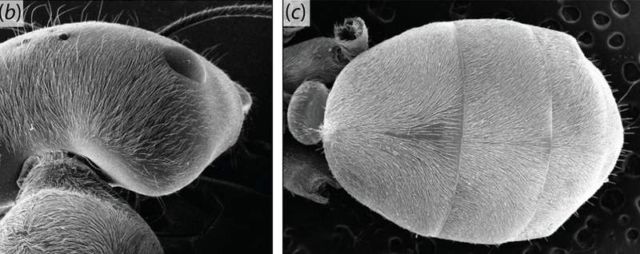
The hairs covering the dorsal side of the workers’ head, thorax (b) and abdomen (c) follow the cuticle’s curvatures.
The research was published in PLOS One:
Those two effects account for remarkable thermoregulatory properties, enabling the ant to maintain a lower thermal steady state and to cope with the high temperature of its natural habitat. In this paper, we further investigate how geometrical optical and high reflection properties account for the bright silver color of C. bombycina. Using optical ray-tracing models and attenuated total reflection (ATR) experiments, we show that, for a large range of incidence angles, total internal reflection (TIR) conditions are satisfied on the basal face of each hair for light entering and exiting through its upper faces. The reflection properties of the hairs are further enhanced by the presence of the corrugated surface, giving them an almost total specular reflectance for most incidence angles. We also show that hairs provide an almost 10-fold increase in light reflection, and we confirm experimentally that they are responsible for a lower internal body temperature under incident sunlight. Overall, this study improves our understanding of the optical mechanisms responsible for the silver color of C. bombycina and the remarkable thermoregulatory properties of the hair coat covering the ant’s body.
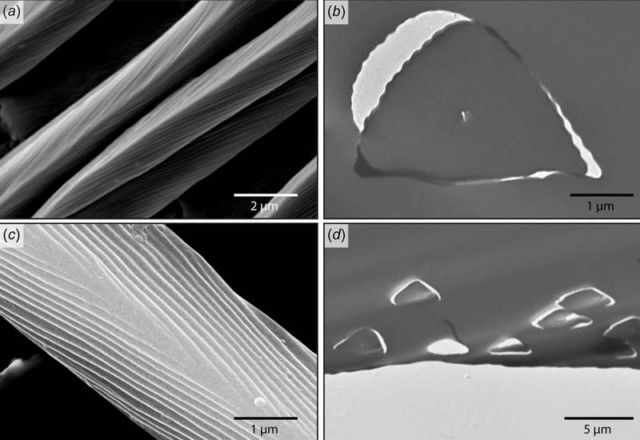
Electron microscopy images of the hairs covering the dorsal side of the body of C. bombycina: (a) Scanning electron microscopy (SEM) of the hairs covering the cuticle of ants. Hairs have a triangular shape and end in a sharp point. (b) Transmission electron microscopy (TEM) image of the cross-section of a hair. The two upper sides of the triangular shape are corrugated and the lower side (the triangle base) is flat. (c) Close up on the corrugations covering the two upper side of the triangular shape. (d) TEM image of hairs shows that they all adopt the same orientation, with their flat basal side parallel to each other and to the cuticle surface. The corrugated sides of the hairs are turned up as is clearly visible on image (a).
source PLOS One

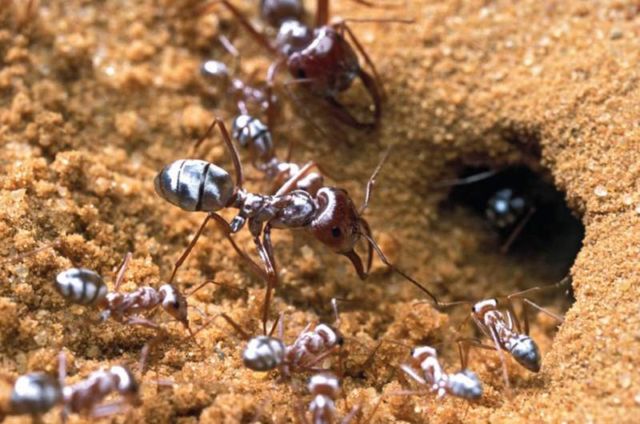
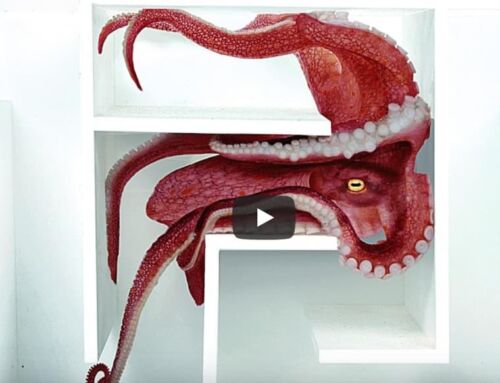
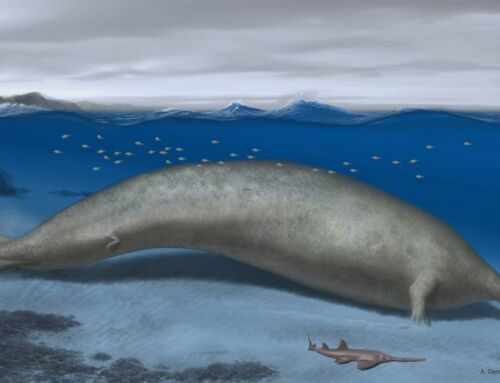
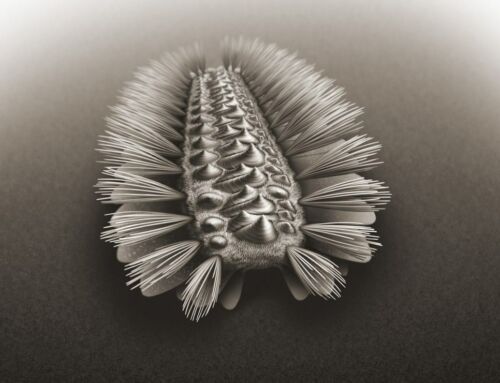
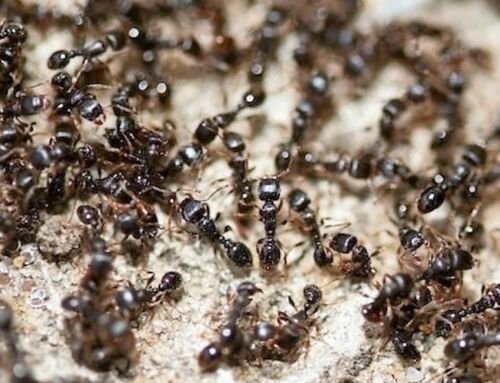
Leave A Comment